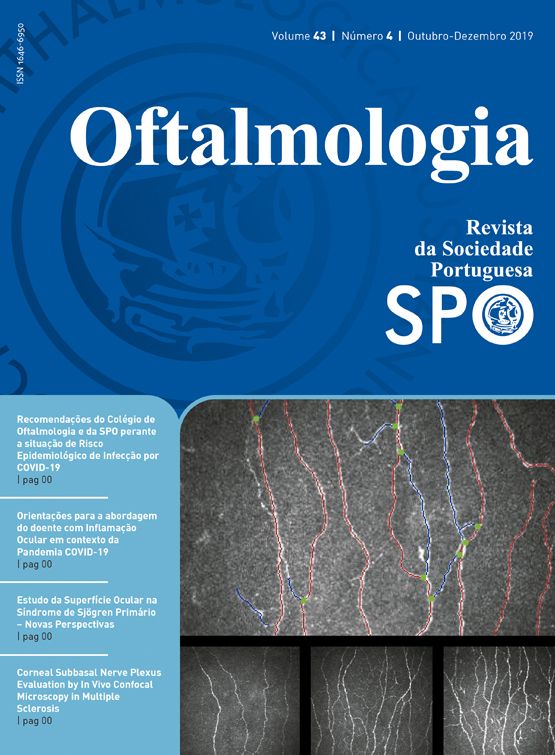Trends in corneal transplant indications and techniques in Coimbra, Portugal: 2011 -2016
DOI:
https://doi.org/10.48560/rspo.17288Abstract
Abstract
Objective: the aim of this study is to determine the recent trends in corneal transplant indications and corneal tissue use in Coimbra.
Methods: data concerning all corneal transplantation procedures performed at Centro Hospitalar e Universitário de Coimbra (CHUC) between 2011 and 2016 were collected and stored at the CHUC Eye Bank. We retrospectively analysed recipient age, gender, primary diagnosis and transplantation technique.
Results: 710 corneal transplants were reviewed for analysis. Regraft accounted for 207 (29.2%) of all procedures, followed by bullous keratopathy, with 125 cases (17.6%) and keratoconus, with 118 cases (16.6%). No statistically significant shift in indications for grafting was identified over the 6-year period (p = 0.70). Penetrating keratoplasty (PK) accounted for 506 procedures (71.3%), Descemet’s stripping automated endothelial keratoplasty (DSAEK) for 129 (18.2%), and deep anterior lamellar keratoplasty (DALK) for 64 (9.0%). Over the 6 years, we observed a statistically significant decline in the numbers of PK, accompanied by an increase in DSAEK and DALK.
Conclusions: Eye bank registries provide an effective means to evaluate corneal transplantation evolution. Transplant indications have remained stable across the time frame considered. Compared with other series, we report more repeat grafts, less keratoconus and similar percentages of bullous keratopathy and corneal dystrophies. In terms of surgical technique, this study provides further evidence of the increasing popularity of lamellar keratoplasties, in opposition to PK. In conclusion, the indications and techniques for corneal transplantation continue to evolve rapidly, and merit continued investigation to optimize the activities of eye banks and transplant centres.
Downloads
Downloads
Published
How to Cite
Issue
Section
License
Do not forget to download the Authorship responsibility statement/Authorization for Publication and Conflict of Interest.
The article can only be submitted with these two documents.
To obtain the Authorship responsibility statement/Authorization for Publication file, click here.
To obtain the Conflict of Interest file (ICMJE template), click here





